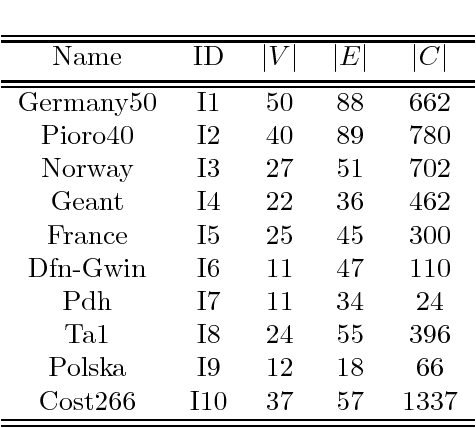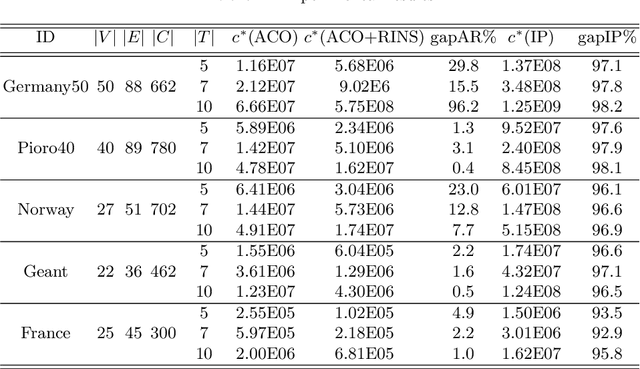Jonatan Krolikowski
Contrastive Learning and Data Augmentation in Traffic Classification Using a Flowpic Input Representation
Sep 18, 2023Abstract:Over the last years we witnessed a renewed interest towards Traffic Classification (TC) captivated by the rise of Deep Learning (DL). Yet, the vast majority of TC literature lacks code artifacts, performance assessments across datasets and reference comparisons against Machine Learning (ML) methods. Among those works, a recent study from IMC'22 [17] is worth of attention since it adopts recent DL methodologies (namely, few-shot learning, self-supervision via contrastive learning and data augmentation) appealing for networking as they enable to learn from a few samples and transfer across datasets. The main result of [17] on the UCDAVIS19, ISCX-VPN and ISCX-Tor datasets is that, with such DL methodologies, 100 input samples are enough to achieve very high accuracy using an input representation called "flowpic" (i.e., a per-flow 2d histograms of the packets size evolution over time). In this paper (i) we reproduce [17] on the same datasets and (ii) we replicate its most salient aspect (the importance of data augmentation) on three additional public datasets, MIRAGE-19, MIRAGE-22 and UTMOBILENET21. While we confirm most of the original results, we also found a 20% accuracy drop on some of the investigated scenarios due to a data shift in the original dataset that we uncovered. Additionally, our study validates that the data augmentation strategies studied in [17] perform well on other datasets too. In the spirit of reproducibility and replicability we make all artifacts (code and data) available at [10].
User-aware WLAN Transmit Power Control in the Wild
Feb 21, 2023Abstract:In Wireless Local Area Networks (WLANs), Access point (AP) transmit power influences (i) received signal quality for users and thus user throughput, (ii) user association and thus load across APs and (iii) AP coverage ranges and thus interference in the network. Despite decades of academic research, transmit power levels are still, in practice, statically assigned to satisfy uniform coverage objectives. Yet each network comes with its unique distribution of users in space, calling for a power control that adapts to users' probabilities of presence, for example, placing the areas with higher interference probabilities where user density is the lowest. Although nice on paper, putting this simple idea in practice comes with a number of challenges, with gains that are difficult to estimate, if any at all. This paper is the first to address these challenges and evaluate in a production network serving thousands of daily users the benefits of a user-aware transmit power control system. Along the way, we contribute a novel approach to reason about user densities of presence from historical IEEE 802.11k data, as well as a new machine learning approach to impute missing signal-strength measurements. Results of a thorough experimental campaign show feasibility and quantify the gains: compared to state-of-the-art solutions, the new system can increase the median signal strength by 15dBm, while decreasing airtime interference at the same time. This comes at an affordable cost of a 5dBm decrease in uplink signal due to lack of terminal cooperation.
Cross-network transferable neural models for WLAN interference estimation
Nov 25, 2022



Abstract:Airtime interference is a key performance indicator for WLANs, measuring, for a given time period, the percentage of time during which a node is forced to wait for other transmissions before to transmitting or receiving. Being able to accurately estimate interference resulting from a given state change (e.g., channel, bandwidth, power) would allow a better control of WLAN resources, assessing the impact of a given configuration before actually implementing it. In this paper, we adopt a principled approach to interference estimation in WLANs. We first use real data to characterize the factors that impact it, and derive a set of relevant synthetic workloads for a controlled comparison of various deep learning architectures in terms of accuracy, generalization and robustness to outlier data. We find, unsurprisingly, that Graph Convolutional Networks (GCNs) yield the best performance overall, leveraging the graph structure inherent to campus WLANs. We notice that, unlike e.g. LSTMs, they struggle to learn the behavior of specific nodes, unless given the node indexes in addition. We finally verify GCN model generalization capabilities, by applying trained models on operational deployments unseen at training time.
Neural combinatorial optimization beyond the TSP: Existing architectures under-represent graph structure
Jan 03, 2022



Abstract:Recent years have witnessed the promise that reinforcement learning, coupled with Graph Neural Network (GNN) architectures, could learn to solve hard combinatorial optimization problems: given raw input data and an evaluator to guide the process, the idea is to automatically learn a policy able to return feasible and high-quality outputs. Recent work have shown promising results but the latter were mainly evaluated on the travelling salesman problem (TSP) and similar abstract variants such as Split Delivery Vehicle Routing Problem (SDVRP). In this paper, we analyze how and whether recent neural architectures can be applied to graph problems of practical importance. We thus set out to systematically "transfer" these architectures to the Power and Channel Allocation Problem (PCAP), which has practical relevance for, e.g., radio resource allocation in wireless networks. Our experimental results suggest that existing architectures (i) are still incapable of capturing graph structural features and (ii) are not suitable for problems where the actions on the graph change the graph attributes. On a positive note, we show that augmenting the structural representation of problems with Distance Encoding is a promising step towards the still-ambitious goal of learning multi-purpose autonomous solvers.
* 8 pages, 7 figures, accepted at AAAI'22 GCLR 2022 workshop on Graphs and more Complex structures for Learning and Reasoning
A Fast Hybrid Primal Heuristic for Multiband Robust Capacitated Network Design with Multiple Time Periods
Apr 27, 2017

Abstract:We investigate the Robust Multiperiod Network Design Problem, a generalization of the Capacitated Network Design Problem (CNDP) that, besides establishing flow routing and network capacity installation as in a canonical CNDP, also considers a planning horizon made up of multiple time periods and protection against fluctuations in traffic volumes. As a remedy against traffic volume uncertainty, we propose a Robust Optimization model based on Multiband Robustness (B\"using and D'Andreagiovanni, 2012), a refinement of classical Gamma-Robustness by Bertsimas and Sim that uses a system of multiple deviation bands. Since the resulting optimization problem may prove very challenging even for instances of moderate size solved by a state-of-the-art optimization solver, we propose a hybrid primal heuristic that combines a randomized fixing strategy inspired by ant colony optimization, which exploits information coming from linear relaxations of the problem, and an exact large neighbourhood search. Computational experiments on a set of realistic instances from the SNDlib show that our original heuristic can run fast and produce solutions of extremely high quality associated with low optimality gaps.
* This is the authors' final version of the paper published in Applied Soft Computing 26, 497-507, 2015, DOI: 10.1016/j.asoc.2014.10.016. The final publication is available at Elsevier ScienceDirect via http://dx.doi.org/10.1016/j.asoc.2014.10.016
A hybrid primal heuristic for Robust Multiperiod Network Design
Apr 22, 2017
Abstract:We investigate the Robust Multiperiod Network Design Problem, a generalization of the classical Capacitated Network Design Problem that additionally considers multiple design periods and provides solutions protected against traffic uncertainty. Given the intrinsic difficulty of the problem, which proves challenging even for state-of-the art commercial solvers, we propose a hybrid primal heuristic based on the combination of ant colony optimization and an exact large neighborhood search. Computational experiments on a set of realistic instances from the SNDlib show that our heuristic can find solutions of extremely good quality with low optimality gap.
* This is the authors' final version of the paper published in: Esparcia-Alc\'azar A., Mora A. (eds), EvoApplications 2014: Applications of Evolutionary Computation, LNCS 8602, pp. 15-26, 2014. DOI: 10.1007/978-3-662-45523-4\_2. The final publication is available at Springer via http://dx.doi.org/10.1007/978-3-662-45523-4_2. arXiv admin note: substantial text overlap with arXiv:1410.5850
 Add to Chrome
Add to Chrome Add to Firefox
Add to Firefox Add to Edge
Add to Edge